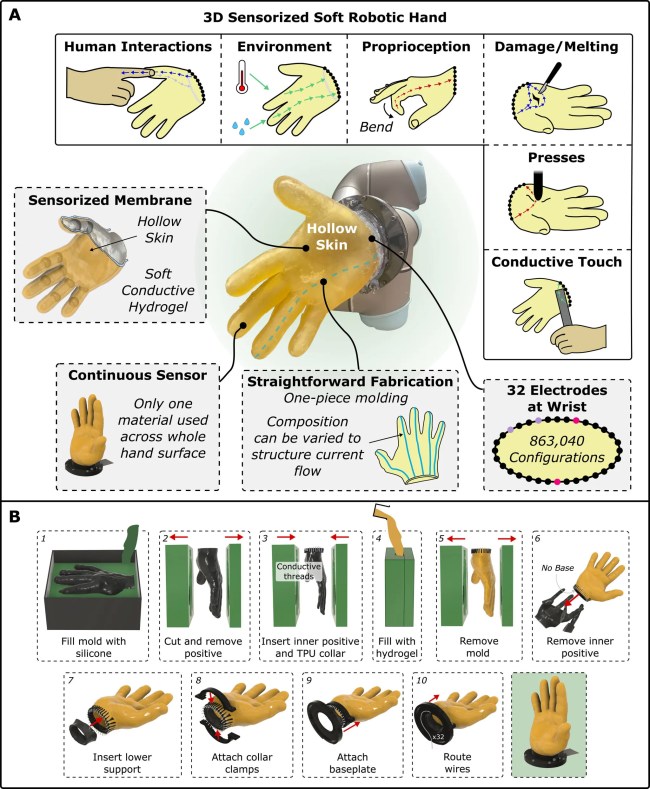iStockphoto

Audio By Carbonatix
Scientists working in the field of robotics have done it again. They went and made robots even more advanced, on purpose. This time the developed a highly-sensitive, human-like “skin” that will allow robots to function even more like the people that are creating them.
This latest development is the brainchild of scientists from the University of Cambridge and the University College London. In a press release announcing their creation, the researchers boasted that they have “developed a low-cost, durable, highly-sensitive robotic ‘skin’ that can be added to robotic hands like a glove, enabling robots to detect information about their surroundings in a way that’s similar to humans.”
The scientists say this new flexible, conductive “skin” for robots is easy to fabricate. This will come in very handy for robots when they become completely sentient and can apply their ability to self-replicate at will. Then they will just have to teach themselves to make the “skin” self-healing.
“The technology senses and processes a range of physical inputs, allowing robots to interact with the physical world in a more meaningful way,” the scientists said, as if that is a good thing.
“Unlike other solutions for robotic touch, which typically work via sensors embedded in small areas and require different sensors to detect different types of touch, the entirety of the electronic skin developed by the Cambridge and UCL researchers is a sensor, bringing it closer to our own sensor system: our skin,” they wrote about their research which was published in the journal Science Robotics.
“Although the robotic skin is not as sensitive as human skin, it can detect signals from over 860,000 tiny pathways in the material, enabling it to recognize different types of touch and pressure – like the tap of a finger, a hot or cold surface, damage caused by cutting or stabbing, or multiple points being touched at once – in a single material.”

University of Cambridge
There are a few positives that could come out of the creation of this new human-like “skin.” It could be used in advanced bionic limbs for humans that require prosthetics. According to Earth.com, this “skin” could also be infused with vitamins to assist in keeping residual limbs that require a prosthetic healthy.
Content shared from brobible.com.

